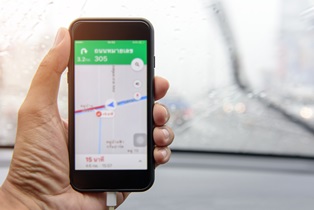Technology has certainly changed since Google Maps debuted on February 8, 2005. Today, Google obtains some of its information about traffic and car accidents from people who don’t know they’re providing it and from others who want to share it. 
Three Ways Google Maps Gets the Info it Needs
Google can’t get the information it needs to report on traffic and car accidents without help from others. Specifically, Google Maps gets its information about road conditions from:
- Crowdsourcing. People are encouraged to report traffic conditions through Waze, and that information is included in the traffic condition data reported back by Google Maps.
- Local highway authorities. Local highway authorities may have road sensors or cameras and may share that information with Google.
- Information from your phone you may not know you’re sending. If you have location services turned on in your phone settings, you may be transferring information about traffic conditions to Google without even knowing it. Google analyzes how fast you are moving while the Google Maps app is open and uses that as part of its traffic condition analysis.
Google Maps provides many benefits to users who are traveling to a new location or who are stuck in traffic. The app may tell them how to bypass traffic, which lane to be in to ensure getting off at the right exit, and the length of time for certain slow-down points.
Google Maps may be a helpful tool for you and other drivers, but as with any map or GPS, it’s important to not become distracted when using it and to keep your eyes first on the road.
If you have been in a car accident, please contact Kearney, Freeman, Fogarty & Joshi today by sending us a message or calling 877.652.1553.
|
Related links: |

